Laguna Madre
by Kyle Spiller and Randy Blankinship, Coastal Biologists in Corpus Christi and Brownsville
Karankawa and Coahuiltecan Indians were probably the first people to see the long, narrow bay that stretches from Corpus Christi south 130 miles to the Rio Grande. Without a written language, what they called the bay or if they had a name for it is lost to history. The Spanish explorer Captain Alonso de Pineda, the first European to see the bay, called it Laguna Madre “Mother Laguna”.
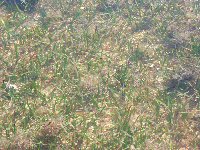
The Laguna Madre is really two bays divided roughly in the middle by 20 miles of sporadically inundated mud and sand flats known as Saltillo Flats (Land Bridge). The northern bay, about 40 miles long, became known as the upper Laguna Madre and the area south of the Land Bridge, became known as the lower Laguna Madre. Upon completion of the Gulf Intracoastal Waterway (ICWW) in 1949 the upper and lower Laguna Madre were permanently joined by what came to be known as the Land Cut.
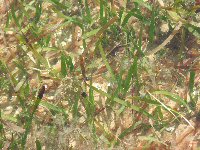
With much of the upper and lower Laguna Madre shorelines protected from development by large ranches on the west and Padre Island National Seashore on the east, these bays are as remote and pristine as any in Texas. Their clear shallow waters promote the growth of extensive seagrass beds. In fact, about 80% of the remaining seagrass habitat in Texas is located in the Laguna Madre system. These seagrass meadows provide protective nursery areas for larval and juvenile fish, shrimp and crabs as well as cover and feeding areas for adult fish including spotted seatrout and red drum.
Because of low fresh water inflow, little rainfall, and high evaporation, the salinity of the Laguna Madre often exceeds that of seawater. The Laguna Madre system is the only hyper-saline coastal lagoon in North America and one of only five in the world. Despite harsh conditions imposed by high salinities, the Laguna Madre is an extremely productive bay system and is renowned among anglers for its world class fisheries.
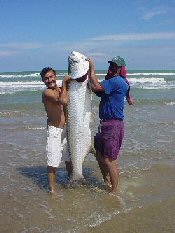
Oyster reefs are common in most other bay systems along the Texas coast. Because of the Laguna Madre’s high salinity, they are found only in South Bay at the southern end of the lower Laguna Madre where salinities are more moderate. Rock reefs represent another natural hard substrate found in the Laguna Madre. There are two types of rock reefs found in the Laguna, both of which provide habitat for a variety of plants and animals. Reefs comprised of beach rock were formed from the remnants of Gulf beaches that disappeared long ago as the level of the sea rose and fell. The rocks are composed of whole shells, shell fragments, and grains of sand bound together by a calcium carbonate cement. Although they can be found along the western shore of the lower Laguna Madre, they are most abundant in the upper Laguna Madre just south of Baffin Bay. The second type of rock reef found in the Laguna Madre is the serpulid reefs, the infamous rocks of Baffin Bay. These reefs were formed from the calcareous tubes of serpulid worms. Formation of the reefs began about 3,000 years ago and ended about 300 years ago.
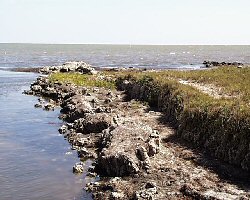
Topping the list of Laguna Madre fisheries is spotted seatrout. Because of management measures adopted by the Texas Parks and Wildlife Commission (TPWC) populations of spotted seatrout in the upper Laguna Madre have increased over the past 10 years. Texas Parks and Wildlife Department (TPWD) gill net samples collected in 2004 indicate that the population of fish greater than 15 inches in length were at record levels, as was the number of trophy fish over 25 inches. While spotted seatrout populations in the lower Laguna Madre have been slower to respond to the new regulations they are still relatively large in comparison with other Texas bays systems.
Many anglers think of the Laguna Madre only in terms of its spotted seatrout fishery. However, red drum provide anglers with another excellent fishing opportunity. The populations of red drum in both the upper and lower Laguna Madre are at record highs. Management measures adopted by TPWC over the last three decades have contributed to the recovery of this fishery.
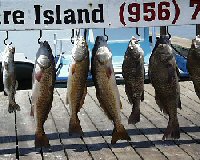
In addition to spotted seatrout and red drum, both the upper and lower Laguna Madre offer some unique fishing opportunities. TPWD’s monitoring program indicates that the black drum population in the upper Laguna Madre is about four times that of spotted seatrout or red drum. Despite their abundance, black drum are generally overlooked by upper Laguna Madre anglers.
The two bay–gulf passes in the lower Laguna Madre offers fishing opportunities for snook, gray snapper, Florida pompano and barracuda not found in the upper Laguna Madre or most other Texas bays. The variety of species available can lead to the occasional surprise on the end of an angler’s line.
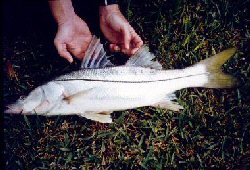
South Texas anglers dodged a bullet this winter when a severe cold front passed through on Christmas Eve in 2004 dropping water temperatures and providing the first measurable snowfall in 70 years in Corpus Christi and 100 years in Brownsville. Fortunately, the cold front did not result in a significant fish kill in the upper Laguna Madre and a relatively minor kill in the lower Laguna Madre. Approximately, 35,000 fish (mainly gray snapper and striped mullet) died in the lower Laguna Madre.
More recently, brown tide has returned to the upper and lower Laguna Madre. Brown tide, an algal bloom that persisted in varying degrees of severity throughout the Laguna Madre in the 1990’s, was reported this fall. A concentrated bloom had developed by February 2005. Brown tide is not toxic to fish or humans but can be detrimental to seagrasses by reducing light penetration and reducing the plant’s ability to photosynthesize resulting in loss of seagrass habitat.
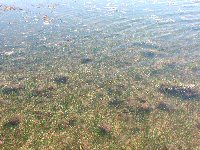
In some ways, the Laguna Madre is as the Karankawa Indians, Coahuiltecan Indians and Spanish explorers found it; a dynamic and productive system, remote and pristine, that is sometimes harsh, and unforgiving. Yet, it is vulnerable and fragile in the face of the demands and pressures placed on it by a modern world. It needs our careful management and protection to insure it is always the “Mother Lagoon”.
© Copyright Texas Parks and Wildlife Department. No part of this work may be copied, reproduced, or translated in any form or medium without the prior written consent of Texas Parks Wildlife Department except where specifically noted. If you want to use these articles, see Site Policies.